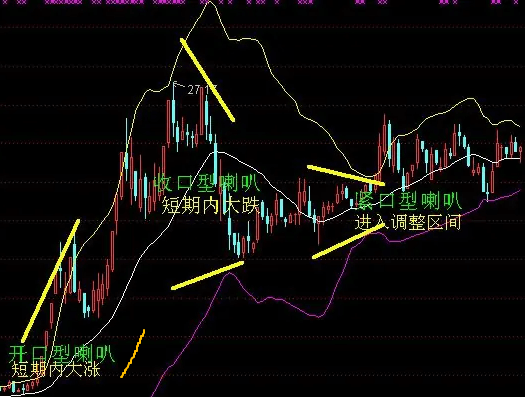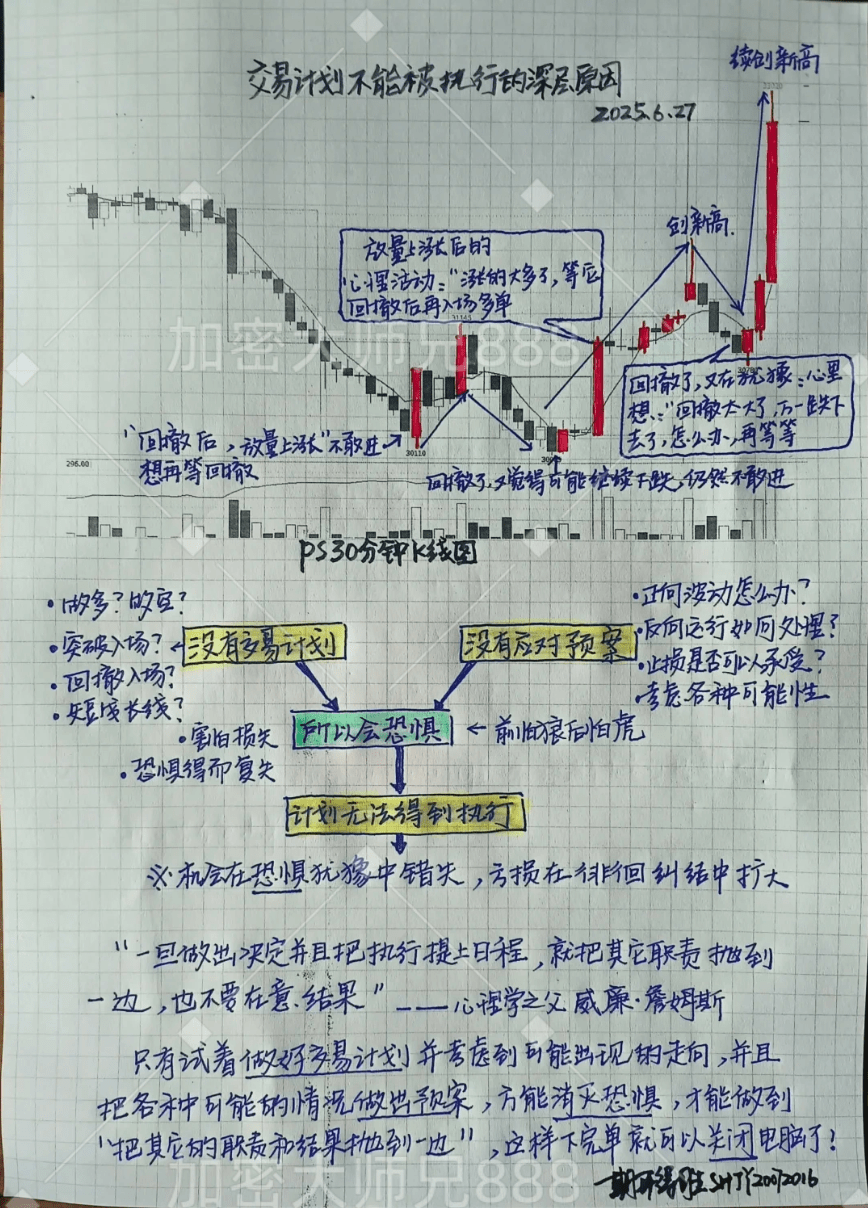A predecessor made a profit of 10 million. He summarized it in one sentence: Rise until you are excited, and drop until you cut your losses. Trading crypto is an emotional game!
Therefore, it's normal for retail investors to see prices drop as soon as they buy and to rise as soon as they sell. This is because your emotions are like everyone else's; if most people's thoughts align, the market will move in the opposite direction. What do the main players rely on to trade?
Once you solve this problem, you will understand the essence of the rise and fall in the crypto world. To this end, he summarizes the 4 essential indicators + practical formulas that retail investors must learn: only four tricks are needed to go from liquidation to doubling.
One, SAR Indicator: The Ultimate Tool for Trend Tracking

Bull-Bear Divide: The Logic of the SAR Point's Lifeline
The SAR indicator (Parabolic Stop and Reverse) dynamically tracks price changes, generating upward points (bullish trend) below the K-line or downward points (bearish trend) above the K-line. When the price stabilizes above the SAR point,hold firmly—— For instance, in 2025, when ETH started at $1800, the SAR point continuously adhered below the K-line, and even with a 20% retracement in between, investors who did not break the SAR point ultimately achieved a 120% return.
Technical Details:Acceleration Factor (AF) set to 0.02, maximum value (AFmax) set to 0.2, filtering out 80% of invalid signals in volatile markets.
When the SAR point angle > 45°, it indicates a strong trend. For example, SOL soared from $30 to $150 in April 2025, with the SAR point nearly vertical; those who exited early missed a 120% profit.
Angle Warning System: 45° Rule to Capture Bulls and Slaughter Bears
Bullish Angle: When the SAR point's upward slope > 45°, hold the position. For instance, during the LTC halving event in 2025, the SAR point angle reached 60°, and holding until the angle flattened could achieve a 200% return.
Bearish Angle: When the SAR point's downward slope > 45°, immediately stop loss. In May 2025, when a certain altcoin crashed, the SAR point angle reached 85°, and those who did not exit in time saw a 90% evaporation of their capital.
Two, Support and Resistance Levels: Precise Coordinates for Capital Competition

Three-Line Resonance Strategy: Three-Dimensional Verification at Key Levels
Historical Dense Transaction Area: For instance, in 2025, FIL formed three supports at $40, with each touch of this level combined with SAR bullish signals and increased trading volume; positions can be built in batches, targeting a resistance level of $50, yielding a 25% profit per entry.
Moving Average Support: When the EMA55 moving average resonates with the SAR point, the support strength increases. In 2025, when BNB retraced to EMA55 ($280), the SAR point moved up simultaneously, forming a 'double insurance', with a subsequent rebound of 30%.
On-Chain Data Verification: By tracking whale addresses through Nansen, if a single purchase over $1 million occurs at a key level, it is viewed as strong support. For example, in June 2025, MATIC received whale support at $1.2, rebounding 22% within 48 hours.
True and False Breakthrough Recognition: The Golden Standard of Trading Volume
Effective Breakthrough: When breaking through a resistance level, trading volume must exceed 2 times the average of the previous 30 days. For example, when BTC broke through $45,000 in 2025, trading volume reached 1.5 million, triggering a main surge to $58,000.
False Breakthrough Warning: If a breakout occurs without volume and falls back to the original range within 3 days, immediate stop loss is necessary. In 2025, when a certain DeFi token broke out at $2.5 with increased volume, it retraced the next day on reduced volume; those who did not exit in time incurred a 40% loss.
Three, Bollinger Bands: The Key to Breaking the Range

Contraction-Expansion Model: Precise Prediction Before Market Change
Contraction Phase: When the Bollinger Bands' upper, middle, and lower tracks converge to a bandwidth of < 5%, it indicates an imminent market change. For example, when Bitcoin consolidated for 28 days in 2025, the Bollinger Bands' bandwidth narrowed to 3%, and then it broke upwards, triggering a 30% increase.
Direction of Expansion:
High-Level Expansion Followed by Contraction: Sell Signal. For example, a certain MEME coin after rising 3 times saw the Bollinger Bands open narrow, followed by a 70% drop.
Low-Level Expansion and Mid-Track Upward Movement: Buy Signal. In 2025, when ETH bottomed at $1600, the Bollinger Bands opened wide, and the mid-track turned, leading to a 50% rebound afterward.
Mid-Track Attack and Defense Strategy: Key to Trend Continuation
Bullish Trend: Price relies on the mid-track to rise; if it retraces without breaking the mid-track, it can add positions. In 2025, DOT found support at the mid-track ($5.8) and continued to rise by 40%.
Bearish Trend: Price suppresses downwards from the mid-track; if the rebound does not break the mid-track, short positions should be taken. In 2025, LUNA 2.0 was blocked at the mid-track ($0.6) and plummeted by 55%.
Four, Volume Analysis: The Ultimate Truth of Capital Flow
The Four Iron Laws of Volume-Price Relationship
High Volume at Peak: After the price rises 5 times, trading volume suddenly increases 3 times, as seen in 2025 when a certain AI token exploded in volume at $12, followed by a sharp drop.
Low Volume Reversal: After a 70% drop in price, trading volume shrinks to the historical 10% percentile, as seen when XRP stabilized at $0.3 in 2025, leading to a subsequent rebound of 120%.
No Volume Rise Trap: Price sets a new high but trading volume does not increase, as seen when a certain GameFi token reached $3.5 with no volume and then plummeted 30% the next day.
Volume-Price Divergence Exit: Price reaches a new high but trading volume is lower than the previous high, as seen when BTC reached $69,000 in 2025 with insufficient volume, followed by a 25% retracement.
Dynamic Trading Volume Threshold
Short-term Trading: Trading volume needs to be > 1.5 times the average of the previous 5 days. For example, when SOL broke through $80 in 2025, trading volume reached 1.5 million, supporting a subsequent increase of 20%.
Long-term Layout: Trading volume > 1% of market capitalization for 3 consecutive days. For instance, in 2025, before the ETH merger upgrade, there was continuous net inflow of funds on-chain, pushing the price to double.
Five, Four Indicator Linked Strategy: A trading system with an 80% win rate
Entry Conditions (Four Arrows Shooting Together)
SAR point is below the K-line and the angle > 45°
Price touches key support levels (historical transaction zone + EMA55 resonance)
Bollinger Bands contract and then first open upwards
Trading volume > 2 times the average of the previous 30 days
Case Study: In 2025, ADA triggered all four indicators simultaneously at $0.45, subsequently rising by 70% over the next month.
Exit Rules (Triple Insurance)
SAR point turns downwards
Price breaks below the support level with increased trading volume
Bollinger Bands narrow at high levels or volume-price divergence
Case Study: In 2025, MATIC triggered three signals simultaneously at $2.8, and timely exit avoided a 40% drawdown.

If you are also a tech enthusiast feeling helpless and confused in trading, wanting to learn more about crypto knowledge and cutting-edge information, tap on my avatar and follow me, so you won’t get lost again! @加密大师兄888 When you can see the market clearly, you will have confidence in your operations. Steady gains are far more realistic than fantasizing about getting rich quickly.